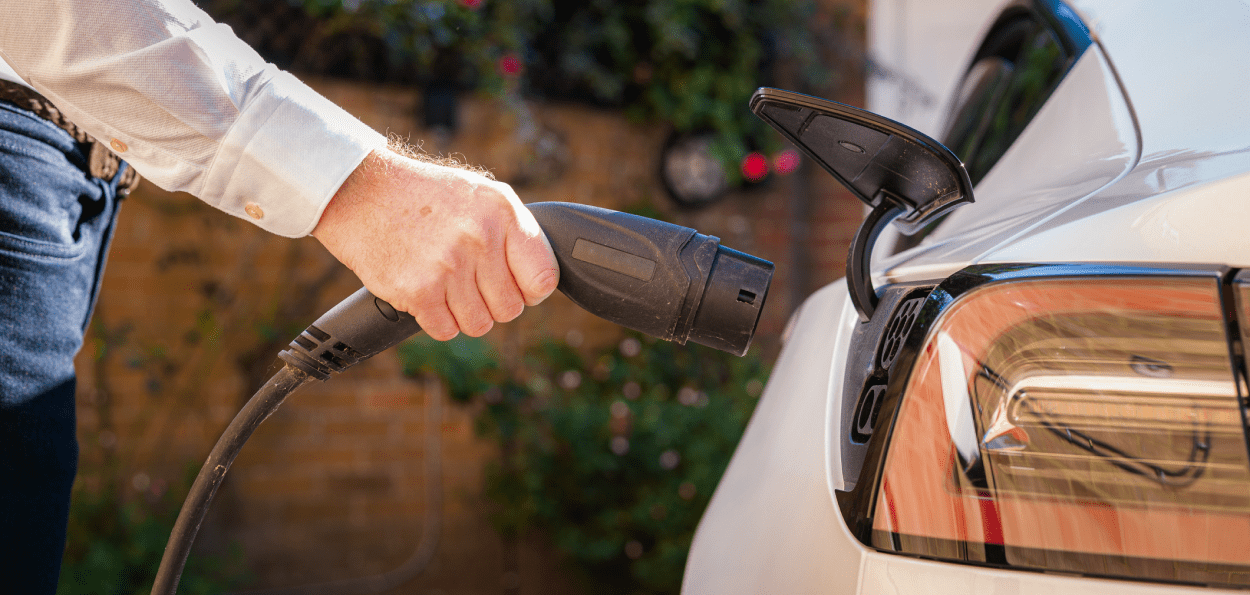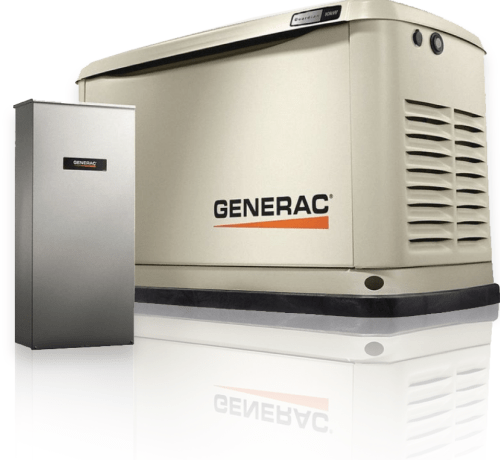

When you buy an electric vehicle, you imagine gliding your emission-free automobile down highways and backroads, passing by gas stations as you relish the thought of cleaner air and a brighter future.
You don’t think about the morning you oversleep and race out the door only to realize your power was out most of the night, and your EV battery doesn’t have enough juice to make it through rush hour traffic. It’s a scenario that won’t happen often, but as our weather patterns become increasingly unpredictable and our grid infrastructure ages and becomes less reliable, is it a chance worth taking?
If your power is out for a prolonged period, you will likely have even more of a need to drive, whether it’s to stock up on batteries, grab ice so all your food doesn’t spoil, etc. The point is, if you commit to driving an electric vehicle, it’s wise to take the necessary precautions to ensure it can run if your electricity is cut off.
Fortunately, there’s a way to charge your EV during an outage without spending tens upon tens of thousands of dollars: a home standby generator.
But first, let’s start with the basics of home EV charging.
EV Home Charging Stations

Today, there are two main ways to charge your electric vehicle at home:*

Level 1 EV Chargers
Like the charger that comes with your smartphone, Level 1 EV chargers are typically supplied by the electric vehicle manufacturer.
- Pros: Can be plugged into standard 120v outlets
- Cons: Charges slowly (17-25 hours to charge a 100-mile battery range), features are limited

Level 2 EV Chargers
Like having a gas pump in our garage, a Level 2 EV charger is a smart appliance that charges four-to-five times faster than a standard charger.
- Pros: Charges quickly (4-5 hours to charge a 100-mile battery range), offers various features (i.e., customized charging schedules)
- Cons: Additional cost, requires a 240v, 40-amp circuit that may require an electrician to install
If you use your EV regularly, Level 2 chargers are the gold standard for home charging. However, if you don’t control your electricity supply, you may need permission from your landlord or homeowner’s association beforehand. In addition, due to the dedicated circuit, your electrical panel may also need to be upgraded to support EV.
What Happens to My EV When the Power Goes Out?

When your power goes out, your home EV charger will lose its electricity source ― the same as if you ran out of gas.
If the outage is brief, your vehicle will begin drawing power from the grid once your electricity is restored. This may be fine for EV owners with a Level 2 charger since it takes only five hours or so to recharge the lithium-ion battery.
However, if you have a Level 1 charger or your power is out for an extended period, you could be out of luck. Since it’s still the early days of electric vehicles, if your power source is cut at home, there’s no guarantee you’ll be able to find a public EV charging station close to your home (as they’re not on every corner ― yet). In addition, if it’s a regional grid outage, you may have a hard time finding a public charging station with a power supply.
Can You Charge an EV with a Portable Generator?

A good rule of thumb is that you need a generator with at least 1,500 watts of power to charge an EV, but the ideal amount of backup power is 3,000 watts, especially if you have a Tesla.*
While some portable generators (the ones you fill with gasoline) offer this wattage, they all have different power outputs and gas capacities. Not every EV cord is compatible with every portable generator either, since the outlets also vary.
What about those extra-large emergency portable generators, you ask? This option is more feasible, but if you use one of these (extraordinarily heavy) gasoline generators for your EV, you may not have any kilowatts left to power other appliances, like your refrigerator.
In addition, because Level 2 chargers require a 240v, 40-amp circuit, you’ll need to connect any portable generator to a manual transfer switch for it to produce power (which should be installed by an electrician).*
With either portable generator option, you’re using gasoline to charge your electric car ― ultimately defeating the purpose of an emission-free vehicle.
There’s a better way to charge your EV during an outage and power your other appliances, too.

Why Use a Whole Home Generator for EV Charging?
Say goodbye to noisy, gasoline-fueled backup power. The most effective means for charging your EV during a power outage is with a permanently installed home generator. Also referred to as a home standby generator, these quiet sources of backup power run on natural gas or propane. They’re installed outside your home and wired to your electrical panel, like an AC unit.
A whole home generator can provide anywhere from 13,000 watts (13 kW) of power, ideal for a 1,500-square foot home, all the way up to 48,000 watts (48 kW), ideal for a larger luxury home.* What’s more, standby generators use an automatic transfer switch that kicks in if the power goes out, so there’s no manual transfer required on your behalf. This means you’ll be able to plug your electric car charger into the outlet as you would during normal home EV charging.
How Much Does a Whole Home Generator Cost?
There are a number of factors to consider when you begin pricing standby generators: size, fuel source, distance from your electrical panel and gas meter, and amount of wiring and gas plumbing to hook up (to name a few).
As of February 2023, the price of a whole home generator in the U.S. ranged from $4,000 to $25,000 or more.* Installation costs are another factor to consider, as are the ongoing fuel prices ― both should be factored into the final cost of your standby generator.
Like other resiliency measures, a whole home generator is an investment. When compared to the price of solar panels plus battery backup to power your EV during an outage, a standby generator is a more affordable option.
With a generator that can feed reliable power to your EV when the grid is stressed or a storm threatens your electricity supply, you can rest assured knowing that you’ll still be able to drive your emission-free vehicle, regardless of what happens outside your home.

